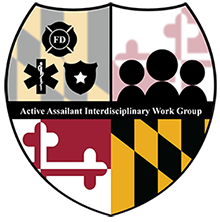Colleges, Universities and Community Colleges
Maintaining a safe academic environment across multiple buildings and outdoor venues across a college campus presents unique challenges. To assist universities, colleges, and community colleges with understanding how to prevent, prepare for, and respond to an active assailant incident, the AAIWG compiled a list of resources and tools to help develop effective risk management and prevention and intervention strategies. These materials are provided as reference only, and not meant to suggest a preference or endorsement. The AAIWG encourages institutions of higher education to use these resources as a starting point in analyzing campus safety and developing or enhancing policies and procedures to fit the needs of individual campuses.
Prevention & Preparedness
https://www.youtube.com/watch?v=9qyD7vjVfLI&feature=youtu.be
This video created by the Sandy Hook Promise presents a scenario that creates thought provoking insight into signs of a possible active assailant in a school environment but can be as relevant in other locations. Sandy Hook Promise is a nonprofit organization formed in Newtown, CT, following the Sandy Hook Elementary School shootings. The organization aims to stop gun violence and emphasizes knowing the signs that can lead to violence.
https://rems.ed.gov/docs/REMS_IHE_Guide_508.pdf
This document is offered as a guide that addresses the importance of preventative and protective measures to stop an emergency from occurring or to reduce the impact of an incident. It emphasizes the nuances of creating effective plans for Institutions of Higher Education.
This journal article from the University Risk Management and Insurance Association (2011) covers the legal duty of care and threat assessment processes and procedures.
Training & Exercises
https://www.youtube.com/watch?v=OP7l1n_8Lh4
This video was created as a public safety announcement by the Towson University Police Department and the Office of Public Safety. It highlights the Avoid, Deny, Defend (ADD) strategy and provides additional tips and strategies unique to a campus setting.
https://alerrt.org/CivilianResponse
The Civilian Response to Active Shooter Events (CRASE) course, designed and built on the Avoid, Deny, Defend (ADD) strategy developed by ALERRT in 2004, provides strategies, guidance, and a proven plan for surviving an active shooter event.
https://community.fema.gov/until-help-arrives
Training video and web-based training course created because life-threatening emergencies can happen fast, and emergency responders aren’t always nearby. These injuries can require immediate action to prevent an injured person from dying, so those nearest to someone are best positioned to provide first care.
One of the best ways to increase a person’s likelihood of survival when severely injured during active assailant incident is to quickly stop severe bleeding. Coworkers can provide initial life-saving measures. The Stop the Bleed® site provides resources on how to organize an in-person training, life-saving strategies and posters, instructional videos, and aid kits to place in common areas.
Survivor & Victim Assistance
https://www.nctsn.org/what-is-child-trauma/trauma-types/terrorism-and-violence/mass-violence
The National Child Traumatic Stress Network (NCTSN) created a number of resources on mass violence including “Parent Guidelines for Helping Youth After the Recent Shooting,” “College Students: Coping After the Recent Shooting” and “Age-Related Reactions to a Traumatic Event.”
Supporting-After-Violence.pdf (schoolmentalhealth.org)
The National Center for School Mental Health (NCSMH) at the University of Maryland School of Medicine (UMSOM) compiled a list of websites and free resources to help support youth, families, schools, and communities impacted by violence.
The Maryland Department of Health compiled a resource guide which provides tips and resources for those impacted by violence, including youth, parents and caregivers, teachers and behavioral health professionals.


